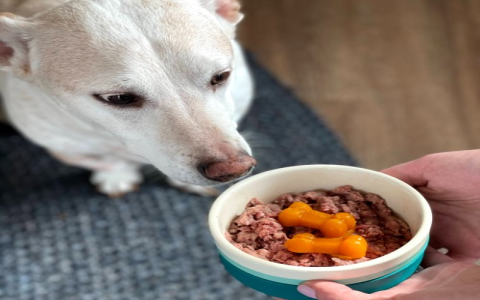Okay, so, I’ve been meaning to switch up my Rottweiler’s diet for a while now. He’s a big boy, and I want to make sure he’s getting the best possible nutrition. After doing some research and talking to other dog owners, I decided to try out a raw food diet, specifically the 80:10:10 model. For those who don’t know, 80:10:10 stands for 80% muscle meat, 10% bone, and 10% organs.
First things first, I gathered all the ingredients. This took some time. I went to a local butcher to source high-quality meat, bones, and organs. It’s crucial to find a reliable source to ensure the quality and safety of the food. I picked up some beef, chicken, and even some liver and kidney. I double-checked everything, making sure it’s fresh.

Then, I started preparing the meals. I set up a clean workspace in my kitchen and got down to business. It’s important to keep everything clean and separate to avoid cross-contamination. I made sure to clean up every day and keep things sanitized.
- Weighing the Meat: I used a kitchen scale to weigh out the muscle meat. For an 80-pound Rottweiler, you’re looking at roughly 2-3% of their body weight in food daily. My rott is about 100 pounds, so I made about 2.5 pounds for each meal.
- Grinding Bones: For the bone content, I decided to grind them up. I got chicken necks and ground them using a meat grinder. If you don’t have a grinder, you can use a cleaver to chop them up, but it’s a bit more work. I made sure that the bone pieces are ground to avoid any choking hazards.
- Preparing Organs: I portioned out the organs, making sure that about half of the organ content was liver. I chopped them into smaller pieces to make them easier to mix in. It’s important to handle organs carefully since they can be quite rich and might upset your dog’s stomach if given in large quantities initially.
After preparing everything, I mixed it all in a large container. I made sure the meat, bone, and organ portions were evenly distributed. Then I divided the mixture into daily meal portions and stored them in the freezer. This way, I only had to thaw out what I needed each day. I used heavy-duty freezer bags to store the portions, making sure to label them with the date.
When I first started feeding my Rottweiler the raw diet, I introduced it gradually. I replaced one of his regular meals with a raw meal for a few days and kept an eye on him. I watched his energy levels, digestion, and overall well-being. I noticed he was more energetic and his coat looked shinier after a couple of weeks.
I also talked to my vet about the switch. It’s always good to get a professional opinion, especially when making significant changes to your dog’s diet. They gave me some pointers on supplements and additional things to watch out for, like making sure he’s getting enough calcium. Then, I adjusted the amounts based on his weight and activity level, so everything remained balanced.
Overall, it’s been a rewarding experience. It takes some effort, but seeing my Rottweiler thrive on this diet makes it all worth it. He’s healthier, happier, and his meals are something he really looks forward to now. Switching to a raw diet might not be for every dog, but it’s definitely something to consider if you’re looking for a more natural approach to feeding your furry friend.





